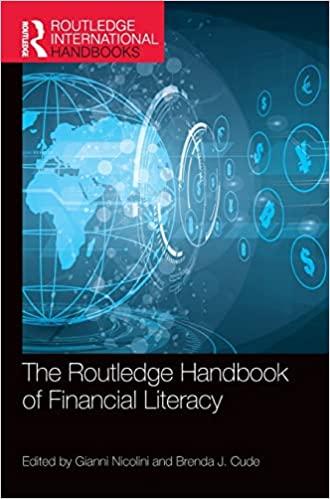The payment made each period on an amortized loan is constant, and it consists of some interest and some principal. The closer we are to the end of the loan's life, the smaller the percentage of the payment that will be a repayment of principal.
2. The market value of any real or financial asset, including stocks, bonds, or art work purchased in hope of selling it at a profit, may be estimated by determining future cash flows and then discounting them back to the present.
3. A bond has a $1,000 par value, makes annual interest payments of $100, has 5 years to maturity, cannot be called, and is not expected to default. The bond should sell at a premium if interest rates are below 10% and at a discount if interest rates are greater than 10%.
4.Which of the following events would make it more likely that a company would choose to call its outstanding callable bonds?
| | a. Market interest rates decline sharply. | | |
| | b. Market interest rates rise sharply. | | |
| | c. Inflation increases significantly. | | |
| | d. The company's financial situation deteriorates significantly. | | |
| | e. The company's bonds are downgraded. | |
5. A 15-year bond has an annual coupon rate of 8%. The coupon rate will remain fixed until the bond matures. The bond has a yield to maturity of 6%. Which of the following statements is CORRECT?
| | a. If market interest rates remain unchanged, the bond's price one year from now will be lower than it is today. | | |
| | b. The bond is currently selling at a price below its par value. | | |
| | c. If market interest rates decline, the price of the bond will also decline. | | |
| | d. If market interest rates remain unchanged, the bond's price one year from now will be higher than it is today. | | |
| | e. The bond should currently be selling at its par value. | |
6. Which of the following statements is CORRECT?
| | a. The expected return on a corporate bond will generally exceed the bond's yield to maturity. | | |
| | b. If a bond's coupon rate exceeds its yield to maturity, then its expected return to investors exceeds the yield to maturity. | | |
| | c. All else equal, senior debt generally has a lower yield to maturity than subordinated debt. | | |
| | d. Under our bankruptcy laws, any firm that is in financial distress will be forced to declare bankruptcy and then be liquidated. | | |
| | e. An indenture is a bond that is less risky than a mortgage bond. | | |
7. Your investment account pays 6.8%, compounded annually. If you invest $5,000 today, how many years will it take for your investment to grow to $9,140.20?
Select the correct answer.
8. You want to purchase a motorcycle 4 years from now, and you plan to save $3,500 per year, beginning immediately. You will make 4 deposits in an account that pays 5.7% interest. Under these assumptions, how much will you have 4 years from today?
9. Suppose you earned a $135,000 bonus this year and invested it at 8.25% per year. How much could you withdraw at the end of each of the next 20 years?
Select the correct answer.
10.Your older brother turned 35 today, and he is planning to save $30,000 per year for retirement, with the first deposit to be made one year from today. He will invest in a mutual fund that's expected to provide a return of 7.5% per year. He plans to retire 30 years from today, when he turns 65, and he expects to live for 25 years after retirement, to age 90. Under these assumptions, how much can he spend each year after he retires? His first withdrawal will be made at theend of his first retirement year.
Select the correct answer.
11. Rogoff Co.'s 15-year bonds have an annual coupon rate of 9.5%. Each bond has face value of $1,000 and makes semiannual interest payments. If you require an 11% nominal yield to maturity on this investment, what is the maximum price you should be willing to pay for the bond?
Select the correct answer.
12. Haswell Enterprises' bonds have a 10-year maturity, a 6.25% semiannual coupon, and a par value of $1,000 . The going interest rate (rd) is 9.75%, based on semiannual compounding. What is the bond's price?
Select the correct answer.






